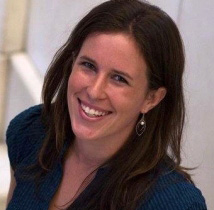Fifty-four researchers from five of Dal's Faculties (Agriculture, Computer Sciences, Engineering, Health Professions, and Science) were recognized on Monday for their creative and innovative approaches to research.
Ed Holder, minister of state (science and technology) announced the recipients of the Natural Sciences and Engineering Research Council’s (NSERC) Discovery Grants Program at the University of Ontario Institute of Technology in Oshawa, Ontario.
The Discovery Grants Program fosters research excellence in ongoing research programs. The funding provides research with the flexibility to pursue promising research avenues as they emerge.
The research funded in Monday’s event supports three of Dal’s priority research areas (ocean studies, advanced materials and clean technology, and health and wellness), as well as three areas of emerging research (information science and communication, agriculture and food technologies, and energy and the environment).
Answering the call
Ěý
Buying a new car is a big decision and one that often takes time to make and rarely is it a rapid decision. Most people will carefully weigh positives and negatives between different car brands and models before making a final decision. But when a phone sits ringing on a desk, you must rapidly decide whether to answer it and plan and execute an action to pick it up before it stops ringing.
 Heather Neyedli, assistant professor in the School of Health and Human Performance, is researching how movements are planned and executed when trying to achieve a goal (answering the ringing phone, for example) while avoiding negatives (knocking the fresh cup of coffee over a keyboard while reaching for the phone). Her earlier research has shown that people often do not make optimal visuomotor decisions.
Heather Neyedli, assistant professor in the School of Health and Human Performance, is researching how movements are planned and executed when trying to achieve a goal (answering the ringing phone, for example) while avoiding negatives (knocking the fresh cup of coffee over a keyboard while reaching for the phone). Her earlier research has shown that people often do not make optimal visuomotor decisions.
“The task of perceiving the environment and planning and executing actions in the context of positive and negative outcomes has been termed visuomotor decision making,” Dr.ĚýNeyedli explains. “There is often not time to carefully weigh positive and negative outcomes, and we rely on our surrounding environment and experience to make the decision.”
The NSERC Discovery Grants Program will assist Dr.ĚýNeyedli in furthering her research to understand where optimal performance breaks down and how training and experience can promote more optimal visuomotor decision making. She’ll also be looking at how we direct attention to positive and negative outcomes when making decisions.
“Findings from my research will explore the dynamic and interactive process that influence rapid decision-making,” she says. “This will provide a better description for how people behave when making visuomoter decisions and new knowledge of the visuomotor system.”
From co-op experience to new battery technology
Mark Obrovac, associate professor in the Faculty of Science and NSERC / 3M Canada Limited Industrial Research Chair in Battery Materials, began his research career in batteries as a co-op student.
Ěý
“I thought it was neat to move atoms in and out of materials,” says Dr. Obrovac.
Ěý
 That interest ledĚýDr. Obrovac to start his masters with Jeff Dahn, professor in the Faculty Science, Canada Research Chair in Battery and Fuel Cell Materials, and NSERC-3M Canada Industrial Research Chair in Materials for Advanced Batteries, when they were both at Simon Fraser University. When Dr. Dahn joined Dal in 1996,ĚýDr. Obrovac came with him to continue and obtain his PhD in Physics. After obtaining his PhD, Dr. Obrovac was a postdoctoral fellow in Chemistry at Cornell University and joined 3M Company in Minnesota after that, where he worked for eight years on the research, development and manufacturing of advanced lithium ion battery materials. He returned to Dal in 2010 to pursue research related to advanced batteries based on completely new chemistries.
That interest ledĚýDr. Obrovac to start his masters with Jeff Dahn, professor in the Faculty Science, Canada Research Chair in Battery and Fuel Cell Materials, and NSERC-3M Canada Industrial Research Chair in Materials for Advanced Batteries, when they were both at Simon Fraser University. When Dr. Dahn joined Dal in 1996,ĚýDr. Obrovac came with him to continue and obtain his PhD in Physics. After obtaining his PhD, Dr. Obrovac was a postdoctoral fellow in Chemistry at Cornell University and joined 3M Company in Minnesota after that, where he worked for eight years on the research, development and manufacturing of advanced lithium ion battery materials. He returned to Dal in 2010 to pursue research related to advanced batteries based on completely new chemistries.
Ěý
“My research focuses on using low-cost and abundant raw materials, such as sodium and magnesium to develop new practical metal-ion battery chemistries,” explains Dr. Obrovac. “Magnesium batteries may have low material cost, plus offer higher energy density than current batteries.”
Ěý
Though this area of his research is still in its infancy there is large potential for it to significantly impact on the battery industry and industries that rely on battery power. Potential applications include cell phones, electrical grid energy storage or electric vehicles.
Ěý
Due to the fact that current magnesium batteries cannot be charged or discharged quickly at room temperature, his research is also looking at other applications where batteries function at high temperatures could operate more efficiently. These areas could be medical devices, drilling exploration and satellites.
Ěý
“Magnesium battery research is where lithium battery research was 30 years ago,” he says. “There is a long road ahead, but the potential impact is enormous.”
Further funding successes
At Monday’s announcement, recipients of NSERC’s Research Tools and Instruments (RTI) Grants, Alexander Graham Bell Canada Graduate Scholarships, and NSERC Postgraduate Scholarships and Postdoctoral Fellowships were also announced. Nine researchers were awarded RTI funding and 13 students were recipients of graduate and postdoctoral scholarships / fellowships.
For a complete list of successful applicants, please visit .
Learn about the NSERC Discovery Grants Program
If the Discovery Grants Program is of interest, please view the Program’s description and requirements on . Notices of Intent for the next round of funding are due August 1, 2015. For questions regarding this opportunity please contact Sara Lavender at sara.lavender@dal.ca.
